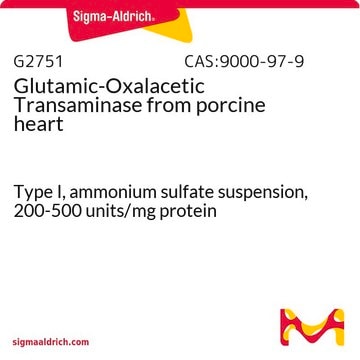A5316
Anti-actinaβ monoclonale
clone AC-74, ascites fluid
Sinonimo/i:
Actin Antibody Sigma, Beta Actin Antibody, Beta Actin Antibody - Monoclonal Anti-β-Actin antibody produced in mouse, Beta Actin Antibody Sigma, Sigma Beta Actin Antibody
About This Item
Prodotti consigliati
Origine biologica
mouse
Coniugato
unconjugated
Forma dell’anticorpo
ascites fluid
Tipo di anticorpo
primary antibodies
Clone
AC-74, monoclonal
PM
antigen 42 kDa
contiene
15 mM sodium azide
Reattività contro le specie
rabbit, sheep, cat, guinea pig, bovine, mouse, chicken, wide range, Hirudo medicinalis, canine, Drosophila, carp, pig, rat, human
tecniche
immunohistochemistry (formalin-fixed, paraffin-embedded sections): suitable
indirect ELISA: suitable
indirect immunofluorescence: 1:1,000 using cultured human or chicken fibroblasts
western blot: 1:5,000 using cultured human or chicken fibroblast cell extracts
Isotipo
IgG2a
N° accesso UniProt
applicazioni
research pathology
Condizioni di spedizione
dry ice
Temperatura di conservazione
−20°C
modifica post-traduzionali bersaglio
unmodified
Informazioni sul gene
human ... ACTB(60)
mouse ... Actb(11461)
rat ... Actb(81822)
Cerchi prodotti simili? Visita Guida al confronto tra prodotti
Descrizione generale
Monoclonal Anti-β-Actin (mouse IgG2a isotype) is derived from the AC-74 hybridoma produced by the fusion of mouse myeloma cells and splenocytes from an immunized mouse.
Immunogeno
Applicazioni
Mouse Monoclonal Anti-β-Actin antibody has been used for western blot analyses. The antibody can also be used for immunohistochemistry, indirect immunofluorescence (1:1,000) using cultured human or chicken fibroblasts, and indirect ELISA.
Western blot analysis of MDCK cell lysates were performed using monoclonal anti-actin antibody as a primary antibody.
Monoclonal Anti-β-Actin antibody has been used in western blotting.
Azioni biochim/fisiol
Stato fisico
Stoccaggio e stabilità
Altre note
Esclusione di responsabilità
Not finding the right product?
Try our Motore di ricerca dei prodotti.
Codice della classe di stoccaggio
12 - Non Combustible Liquids
Classe di pericolosità dell'acqua (WGK)
nwg
Punto d’infiammabilità (°F)
Not applicable
Punto d’infiammabilità (°C)
Not applicable
Certificati d'analisi (COA)
Cerca il Certificati d'analisi (COA) digitando il numero di lotto/batch corrispondente. I numeri di lotto o di batch sono stampati sull'etichetta dei prodotti dopo la parola ‘Lotto’ o ‘Batch’.
Possiedi già questo prodotto?
I documenti relativi ai prodotti acquistati recentemente sono disponibili nell’Archivio dei documenti.
I clienti hanno visto anche
Il team dei nostri ricercatori vanta grande esperienza in tutte le aree della ricerca quali Life Science, scienza dei materiali, sintesi chimica, cromatografia, discipline analitiche, ecc..
Contatta l'Assistenza Tecnica.















